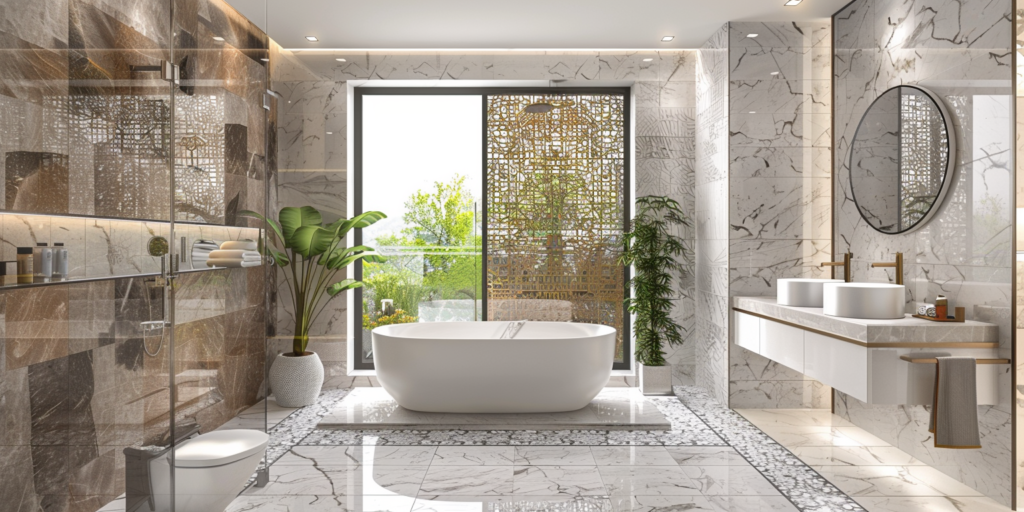To such a homeowner facing limited space, changing the built-up feeling of such rooms is all they want. Wall and floor tiles, which might lead to some optical illusion, are very important in getting this feeling of spaciousness. This article will look at understanding the proper selection of tiles and different tips and strategies to make small spaces appear more prominent.
1. Large Format Tiles for Seamless Elegance
When it comes to the tile size, going for large solid tiles is the way to go. The more oversized tiles result in fewer grout lines, giving the floor a contiguous and unified look and feel. With this transition in visuals, our eyes will not perceive space as less than the one in reality; for mosaic style, choose any tile and grout of the same hue to make tile outputs more visual.
2. The Impact of Tile Layout
The size of the tile isn’t about it alone; in fact, it is the pattern that permits the changing pattern of a room. Tiles ” on point” that are installed diagonally are a tricky but very eye-catching approach. This design achieves the effect but also brings visual dynamism to the room by breaking it up into different areas and giving it the illusion of size.
3. Versailles Pattern for Dimensional Charm
Those needing some extravagance will find using a blend of tile sizes to make a pattern works wonders. For example, the Versailles Pattern was achieved by combining multiple tile sizes in a design. This approach is divorced from the tradeoff between footprint and layout, resulting in the feeling of being surrounded by expanse.
4. Dark Colored Tiles with Strategic Design
Different from the misconception that using light shades to make the area look spacious is ideal, dark-colored tiles can suit it. This can be easily achieved by combining tiles of various shapes with texture so it doesn’t look flat. For example, a helpful solution in such instances can be using diagonal tiles, which create an optical illusion resulting in a narrow space that seems more expansive.
5. Light Colored Tiles for Airy Elegance
But just like light-colored tiles do, they remain nothing other than a classic choice for construction with a vision of more prominent places. They provide tile ceilings, thus the sense of height, and do not restrict the training space. Use a tone-on-tone color combination of warm beiges, off-whites, or soft blues and superbly create a color contrast that does not result in the loss of the spacious feeling.
6. Solid Color, No Pattern for Simplicity
Those who want to express their sparsity side can pick solid-colored tiles not featured with elaborate patterns. A plain tile in neutral tones, specifically on walls with lighter shades of cream or neutral, is a big-time space illusion that makes any room look larger.
7. Embracing Large-Scale Tiles
As the desire for more oversized tiles has increased, numerous residential alternatives besides the classic 12″ tiles gstile.com have arisen. Tiles, classified as one edge more significant than 15 inches, are available in squares or rectangles. This size choice is one area where spatial perception is strongly influenced.
8. Dark or Light Grout: A Critical Decision
The grout color is arguably the most critical design element that dictates the mood of the tile selection. To keep the effect of a big room, designers think about not attracting attention to some particular tiles. For dark tiles, dark grout is the best choice, as it blends and seamlessly gels the floor together to give it a uniform appearance.
By following all these strategies in choosing your tile, your small space will appear large.




